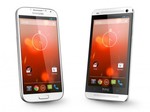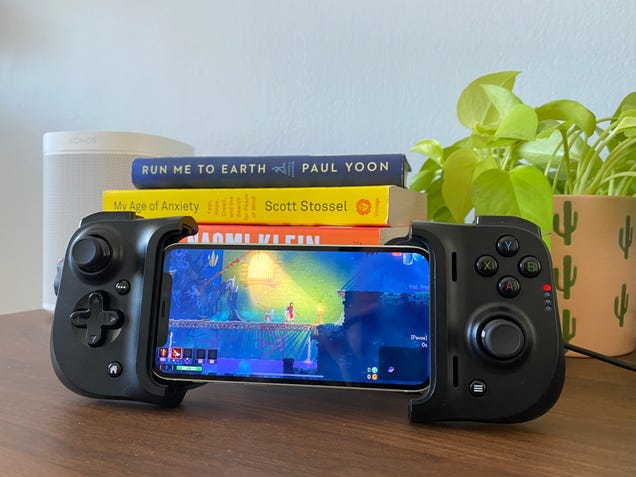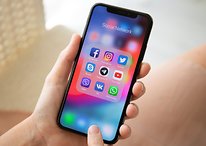Tips for buying a used phone - Android
Buying a new flagship phone or first-of-its-kind from a big-name brand is expensive. The Samsung Galaxy S21 Ultra could cost you upwards of $1,200 or more if you’re not trading something in. Want a folding phone? Open that wallet up wide.
Having the latest and greatest is nice, but truth be told, most users can get away with a phone that’s one or two generations behind. They’re plenty powerful enough and often cost a fraction of the price of something brand new.
Buying a good used phone is an excellent way to save money and yet still end up with a device that’s better than your current one.
The decision to purchase is not just about price; here are some factors to ensure you get the most out of your new phone. Follow these steps and you’ll have a device and experience that you love.
When to buy
The best time to buy a used phone is just after its successor arrives. This is when the early adopters dump their handset as they look to pick up the newest and fanciest model.
In most cases phones are sold in an annual cycle, but it could vary by a month or so. The Samsung Galaxy S line is often introduced in the spring while its stylus-centric Galaxy Note sibling arrives in the fall.
If you can time your purchase around the release of a key phone, it could give you something that’s not all that old.
Research the price
If you have a particular phone in mind, do a little bit of homework. Find out what others are selling the phone for and get a feel for its price.
SEE: Selling a phone? Do these things first
Browse places like Swappa, eBay, Glyde, Gazelle, and Amazon and you’ll get an understanding of what the current value is for a phone. If you’re checking eBay, look for items sold (not just listed) as that’s more indicative.
 Swappa provides a marketplace dedicated to buying and selling used phones.
Swappa provides a marketplace dedicated to buying and selling used phones. Pay particular attention to specifications like the memory and storage. Many phones do not come with one storage capacity.
Understand the phone
It doesn’t matter how good a price is for something if it doesn’t work. The most important factor in purchasing a new handset is ensuring that it will work with your current, or prospective carrier. Note whether it is locked to a particular service provider or if it’s unlocked.
SEE: Reference guide to US carrier bands and networks
If you’re using AT&T, T-Mobile, or one of their respective brands, you should be fine with an unlocked phone. Verizon subscribers need to pay closer attention to make sure it’s either universally unlocked, or can be paired to its network.
Software
When possible, try to avoid older phones that run software that’s a couple of generations behind. You might find the experience lacking and slow. More importantly, this could mean the phone may no longer receive security updates and patches.
Battery life
Does your new phone have a removable battery? If not, consider that the battery life might not be as good as it was when the device was new. Should the phone be two years old, you could be looking at less than desirable battery life. Or, you might have to rely on an external power supply more often.
What else is offered?
Are you just buying a phone or are you getting other items with it? The original charger, for instance, could add a little bit of value. Many Android phones offer fast charging and come with a compatible charger.
Does your prospective phone have a screen protector on it? Is there a protective case or two thrown in the bundle? These might save you a few bucks down the road or at least buy you some time.
If your seller has the original box, that’s also a good indication that you aren’t dealing with a stolen phone.
Condition is key
What are you willing to tolerate? Are you okay with a few scrapes and scratches? Do you mind a dent or two? The more you’re content to overlook, the lower the price goes.
On the other hand, don’t bother with phones with chips and cracks in the glass unless you know what you’re up against. It might be $100-$200 to completely replace the glass. At that rate you may as well look for something that has its screen.
SEE: Upgrading your phone? Here’s what to do if you’re selling the old one
If you’re buying from a friend or co-worker, you probably have a sense for how the phone has been treated. A stranger on the internet? Proceed with caution and make sure you’re protected with a good return policy.
Know your rights
If you’re buying a phone from Swappa, eBay, or an online retailer, get a sense for your return policy. What happens if the phone you’re sent doesn’t match up to the description? Can you get your money back?
Most physical damage is easy to spot as soon as you receive your phone, but it can take some time to identify malfunctioning hardware or problematic software.
Make a note of the final day you’re allowed to return your phone and exercise the option if you need to.
Look your phone over
You’ve pulled the trigger and made the purchase. Congratulations, you have a new (to you) phone!
As soon as you get your phone, start evaluating it. Look it over, check for the imperfections that were, or were not, called out in the sale. Is there anything here that surprises you?
SEE: Selling a phone? Do these things first
Check for water damage. On older phones, or those with removable batteries, you can look for a red stripe on the battery. If it’s blurred and shows evidence of water, that could pose problems in the long run. Newer models can show water damage through the nano-SIM card slot.
If you find that the phone is not what you expected, move quickly to contact the buyer. The sooner you deal with any problems, or at least call attention to them, the better your chances of a positive resolution.
19/02/2021 06:00 PM
[Deal] Save $20 on RAVPower’s AC750 FileHub with Wireless Travel Router
19/02/2021 05:34 PM
Audials Play App Review
19/02/2021 03:00 PM
Verizon’s Galaxy S8 is getting an update some four years after it launched
19/02/2021 03:01 PM
Ask yourself these questions before buying an unlocked phone
19/02/2021 12:00 AM
The Razer Kishi Is a Godsend for Cloud Gaming, at Least Where It’s Supported
19/02/2021 10:00 PM
Free Android and iOS apps of the week
19/02/2021 04:40 PM
Cheap cell phone plans that use the Verizon network
19/02/2021 10:00 PM
Get a handle on your finances and taxes with this Quickbooks training bundle
19/02/2021 08:00 PM
- Comics
- HEALTH
- Libraries & Demo
- Sports Games
- Racing
- Cards & Casino
- Media & Video
- Photography
- Transportation
- Arcade & Action
- Brain & Puzzle
- Social
- Communication
- Casual
- Personalization
- Tools
- Medical
- Weather
- Shopping
- Health & Fitness
- Productivity
- Books & Reference
- Finance
- Entertainment
- Business
- Sports
- Music & Audio
- News & Magazines
- Education
- Lifestyle
- Travel & Local
![[Deal] Save $20 on RAVPower’s AC750 FileHub with Wireless Travel Router](http://www.android.co.rs/data/newsimages/googleandroidphone7.jpg)





